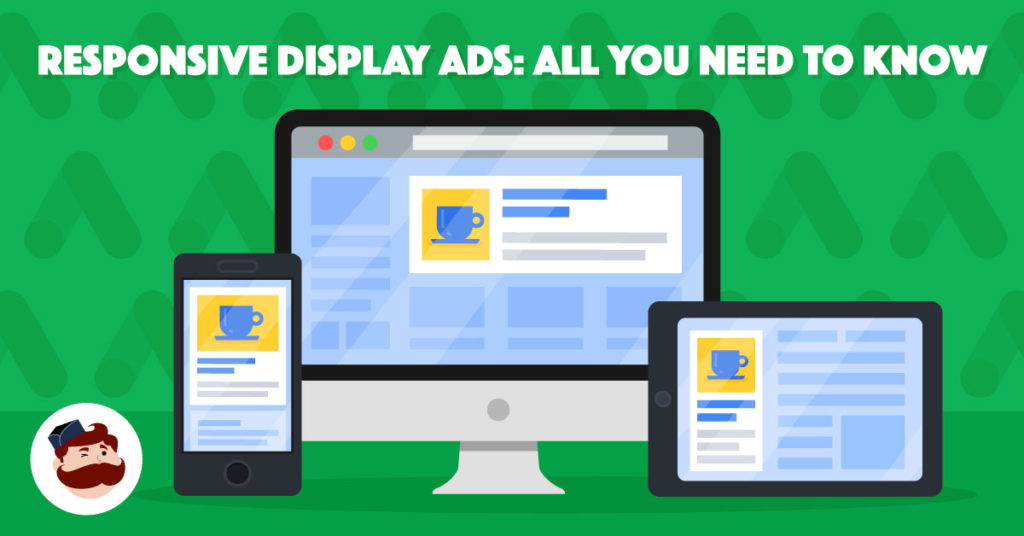Use Responsive Display Ads when you need versatile, automated ads that adapt to various devices and ad spaces. They are ideal for reaching a broader audience with minimal effort.
Responsive Display Ads are a powerful tool in digital marketing. They automatically adjust their size, appearance, and format to fit available ad spaces. This adaptability ensures your ads look great on any device, whether it’s a smartphone, tablet, or desktop.
They save time and resources by eliminating the need to create multiple ad variations. These ads also leverage Google’s machine learning to optimize performance, increasing engagement and conversions. For businesses seeking efficient, scalable advertising solutions, Responsive Display Ads offer a highly effective way to reach and engage with potential customers across the web.

Credit: biliate.com
The Rise Of Responsive Display Ads
Static ads stay the same. They do not change. Dynamic ads change based on user behavior. Responsive display ads adjust their size, appearance, and format. This makes them more flexible. They fit into various spaces on websites. Static ads are less flexible and less engaging. Dynamic ads catch more attention. They are more interactive and relevant.
Advertisers gain many benefits. They save time and effort. No need to create multiple ad versions. Ads are optimized automatically. This can increase click-through rates and conversions. Users see more relevant ads. They enjoy a better browsing experience. Ads match their interests and needs. This makes the ads more effective.

Credit: adespresso.com
Decoding Responsive Display Ads
Responsive Display Ads use machine learning. They fit into various ad spaces on websites. These ads adjust size, appearance, and format. This helps them match the best possible ad space. They use multiple headlines, images, and descriptions. Google then tests different combinations. The goal is to find the best performing ads. These ads reach a broader audience. They are also cost-effective.
High-quality images attract more attention. Use clear and catchy headlines. Descriptions should be brief but informative. Include your brand logo. Always add a call to action. Test different combinations for best results. Update ads regularly to stay fresh.
Optimal Scenarios For Using Responsive Display Ads
Responsive Display Ads are perfect for reaching a wide audience. These ads fit in almost any ad space on the web. They can automatically adjust their size, appearance, and format. This helps maximize visibility on different devices. Ideal for campaigns needing broad reach. They save time and effort by using Google’s machine learning. This ensures ads appear in places where they are most effective. Perfect for advertisers with diverse target audiences.
These ads allow you to test multiple images, headlines, and descriptions. Google automatically finds the best combinations. This helps improve ad performance without extra effort. Great for finding what works best. This makes your campaigns more effective. You can test different messages and visuals. It’s like having many ads in one. Effective for both small and large businesses. Perfect for A/B testing without extra cost.

Credit: websitepandas.com
Integrating Responsive Ads Into Your Marketing Strategy
Define your marketing goals clearly. Aim to increase website traffic or boost sales. Set Key Performance Indicators (KPIs) to measure success. Examples include click-through rates and conversion rates. Track these KPIs regularly. Adjust your strategy based on data. Focus on user engagement and customer satisfaction.
Use responsive display ads to support current campaigns. They can fill gaps in your strategy. Enhance your brand visibility across multiple platforms. Ensure your ads are consistent with your branding. Test different ad formats for best results. Monitor performance and make necessary tweaks. Responsive ads help reach a wider audience.
Design Tips For Maximizing Impact
Visuals should be bright and clear. Use high-quality images that catch the eye. Choose colors that fit your brand. Make sure text is easy to read. Avoid clutter in your design. Simple designs work best. Include your logo in the ad. This helps people remember your brand.
Copy should be short and clear. Use simple words that anyone can understand. Highlight the main benefits of your product. Include a call to action. This tells people what to do next. Use different versions of the same message. Adapt the copy for different ad sizes. This keeps the message clear on all devices.
Measuring Success And Optimizing Performance
Track the click-through rate (CTR) to see if people like your ads. CTR helps you know if your ad is interesting. Another key metric is conversion rate. It shows how many people take the action you want. Look at the cost per click (CPC) to understand how much you pay for each click. Keeping an eye on impressions is also crucial. It tells you how many times your ad is shown. Return on ad spend (ROAS) will tell you if your ads make money. You should also monitor the engagement rate to see if people interact with your ads. These metrics help you understand ad performance better.
Testing different ad formats can help find what works best. Make small changes to your ads to see what improves performance. Use A/B testing to compare different versions of your ad. Look at the data and make informed decisions. Regularly update your ads to keep them fresh. Check your metrics often and make adjustments. Try new keywords and see if they perform better. Always look for ways to improve your ads. Continuous improvement is key to success. Your ads should get better over time.
Frequently Asked Questions
Why Should You Use Responsive Display Ads?
Responsive display ads automatically adjust size, appearance, and format. They improve reach, save time, and increase engagement. They work seamlessly across devices and platforms, enhancing user experience. They also boost ad performance with automated optimization.
When Should You Use Display Ads?
Use display ads to increase brand awareness, target specific audiences, and drive traffic to your website. They are effective for retargeting users who visited your site. Display ads also help promote sales, special offers, and new products.
Why Would An Advertiser Consider Using Responsive Display Ads As A Good Option?
Advertisers use responsive display ads for their flexibility, wide reach, and ability to automatically adjust for optimal performance.
What Is The Main Benefit Of Using Responsive Search Ads?
Responsive search ads provide flexibility by automatically testing various combinations of headlines and descriptions. This increases ad performance and relevance.
Conclusion
Responsive Display Ads offer flexibility and reach for your marketing campaigns. They adapt to various devices and placements, ensuring your message gets seen. Use them when you need a versatile, cost-effective advertising solution. Their automated optimization can enhance your overall campaign performance, making them a valuable tool in your digital marketing strategy.
